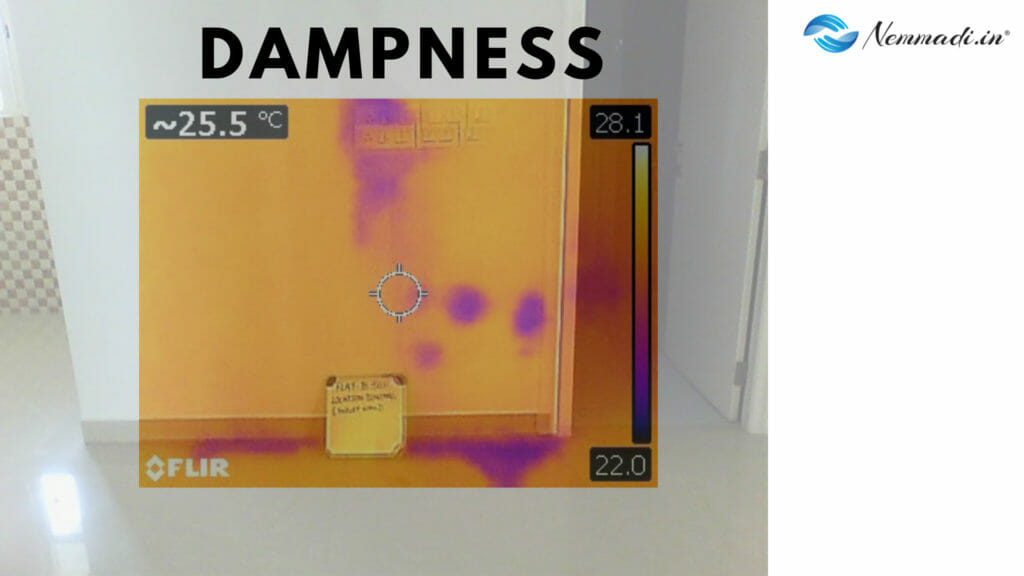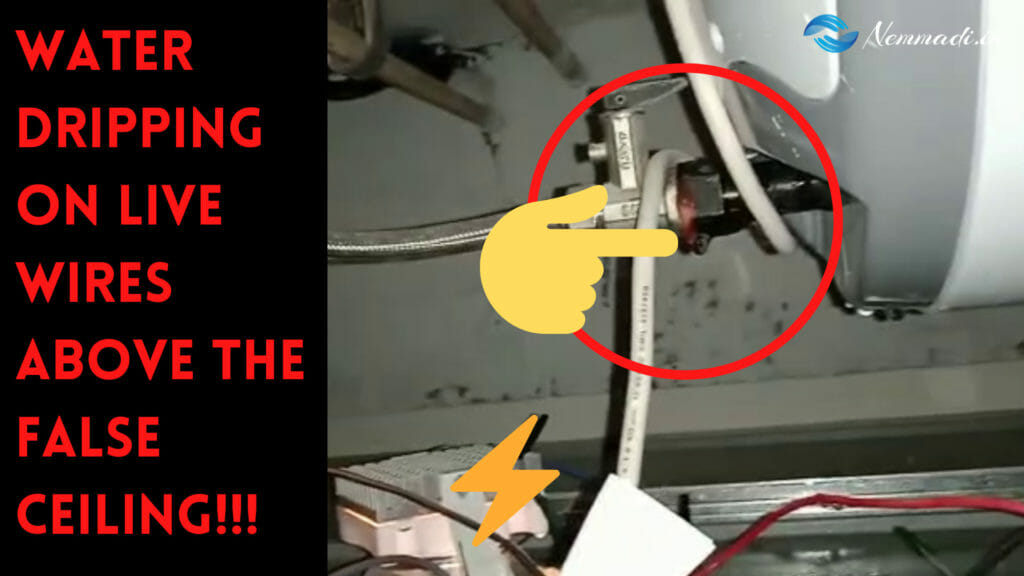Many of us may have bought a beautiful apartment or villa by investing most of our savings or even on a mortgage/home loan. After a few months of living in your new home, you realise that there are a lot of issues.
For example, you may find water oozing from the floor tiles, or your wooden flooring has been laid in an uneven manner, door frames are not finished to the level they should be, electrical fixtures are malfunctioning, and water pressure drops. All these are niggling problems that will not only take your time but also more of your hard-earned money to rectify.
This is why “Home Inspection” is critical – so such problems can be identified before you move into your new home.
It is essential to check your home for the following aspects:
- Civil Engineering
- Electrical
- Plumbing
- Safety
- Dampness / moisture
- Area, as mandated by the Real Estate Regulation Act (RERA)
Let us look at what each of these entails.
- Civil Engineering: One needs to check for workmanship problems that may be present. A diligent inspection will require going through every single room within your home and even outside if it is a villa. A sample checklist may contain checks to see:
- Whether the doors have been fitted properly and are flush with the wall
- Whether the hinges on the doors and windows have all the screws
- Whether there is any undulation in the walls
- Whether there are any tiles that have debonded and resulted in hollowness
- Whether the slope in the balcony, the bathroom and other such spaces, are built as per norms.
- Electrical: One needs to check whether the ELCB is working effectively, whether the line and neutral are in order, whether all the points are supplied with power, and whether the power supply is as per norms.
- Plumbing: It is important to ensure that the water supply and the water pressure are as per standards in all the fittings and fixtures. One needs to check all the plumbing fittings and fixtures in the property to make sure that they are all present and working as required.
- Safety: Check parapet wall heights, the gap between balustrades, etc are as per safety regulations.
- Dampness: This is best done with tools like a Thermographic Camera to spot areas where dampness has manifested onto the surface and in some cases may not be visible to the naked eye. Then these spots need to be checked in conjunction with a moisture metre to make sure that the cool spot is actually because of dampness
- Carpet Area (as mandated by RERA): RERA has defined how the carpet area of an apartment has to be measured, and this is the basis on which a builder is supposed to sell the property. An expert may use laser measures to measure the dimensions of the apartment or villa rooms and also the thickness of the walls which are required to calculate the area as mandated by RERA. According to the RERA, carpet area is defined as ‘the net usable floor area of an apartment, excluding the area covered by the external walls, areas under services shafts, exclusive balcony or verandah area and exclusive open terrace area, but includes the area covered by the internal partition walls of the apartment’. In lay terms – anything inside the outer walls of an apartment, but excluding the open balconies, verandah or open terrace and shafts.

Read more: How a bunch of Bangaloreans helped the Real Estate Bill get passed
Common problems encountered during home inspection
As one may imagine cosmetic flaws, like a chipped kitchen counter, broken window pane, for example, will be in an inspection report. However, these minor snags or problems will rarely lead to a catastrophe. It is often the hidden problems that can cause unprecedented issues. Here are some of the most common things that are seen failing during a home inspection :
Problem #1: Hollow Tiles
According to the National Building Code, there should be no hollowness when tiles are laid.
Problem #2: Slopes in the balcony and wet area of a bathroom
Improper sloping could lead to water not draining out fast enough and accumulating, potentially flowing into the home from the balcony or water could stagnate in puddles in the bathroom, leading to a slipping hazard.
Problem #3: Plumbing
Damaged pipes, malfunctioning water heaters, and backed-up sewage systems are expensive to fix. In some cases the water pressure may not be sufficient, also too high a water pressure may result in water leaks
Problem #4: Pests
Infestation of pests, especially termites can be a huge issue. Termites and other wood-eating insects can cause significant structural damage if left untreated.
Problem #5: Mould
Discovering mould during inspection can spell trouble – not only does it smell awful, it can be harmful to health – triggering allergies and worsening asthma. Extensive mould infestations can be expensive to remediate. Mould is caused by excessive moisture in concurrence with lack of air circulation and is usually a sign of a leak or drainage issue.
Problem#6: Electrical
Problems with electrical wiring are quite common – like no power supply at a point, reverse polarity, failed earthing, missing junction boxes, and damaged plug points to name a few.
Read more: How to make your apartment fire-safe
Problems that must be fixed right after a home inspection
There is no such thing as a mandatory fix after a home inspection — at least not legally. Repairs are necessary to make a home habitable, while others fall more in the “nice to have” bucket.
Home buyers should request fixes that address health hazards or major risks to the property.
These may include: Mould or water damage, pest infestation, leaking plumbing fixtures, fire or electrical hazards, major cracks, building code violations., tripping hazards, fire or electrical hazards and non-functioning equipment.

The role of professional home inspection companies
Given the expertise required, it may make sense to engage a professional home inspection company. Professional firms typically share a detailed visual report that is annotated and marked with a timestamp. Since the report is technical in nature and not subjective, the builder should have no problem attending to the problems or snags identified.
Because most properties fall in the ambit of RERA, it is the responsibility of the builder to attend to these issues.
Should the buyer be present during an inspection?
It is advisable for the homeowner to try and make time to be present during the inspection. Some cogent reasons are: the owner gets everything ‘from the proverbial horse’s mouth’ instead of reading a technical visual report and potentially not understanding or misunderstanding it. Any queries the owner may have can be clarified on the spot, getting this clarified over a phone may be difficult and cumbersome at a later date. It is advised that as an owner, you walk through your house, and ask questions about potential problems which could come up.
From our experience of having helped over 5000 individual homeowners across India, we have seen that on average, there are over 160 issues in a 2000-square-foot house. 60% of them have dampness and 30% of them have some sort of variation in area.
Excellent article – must read for home buyers